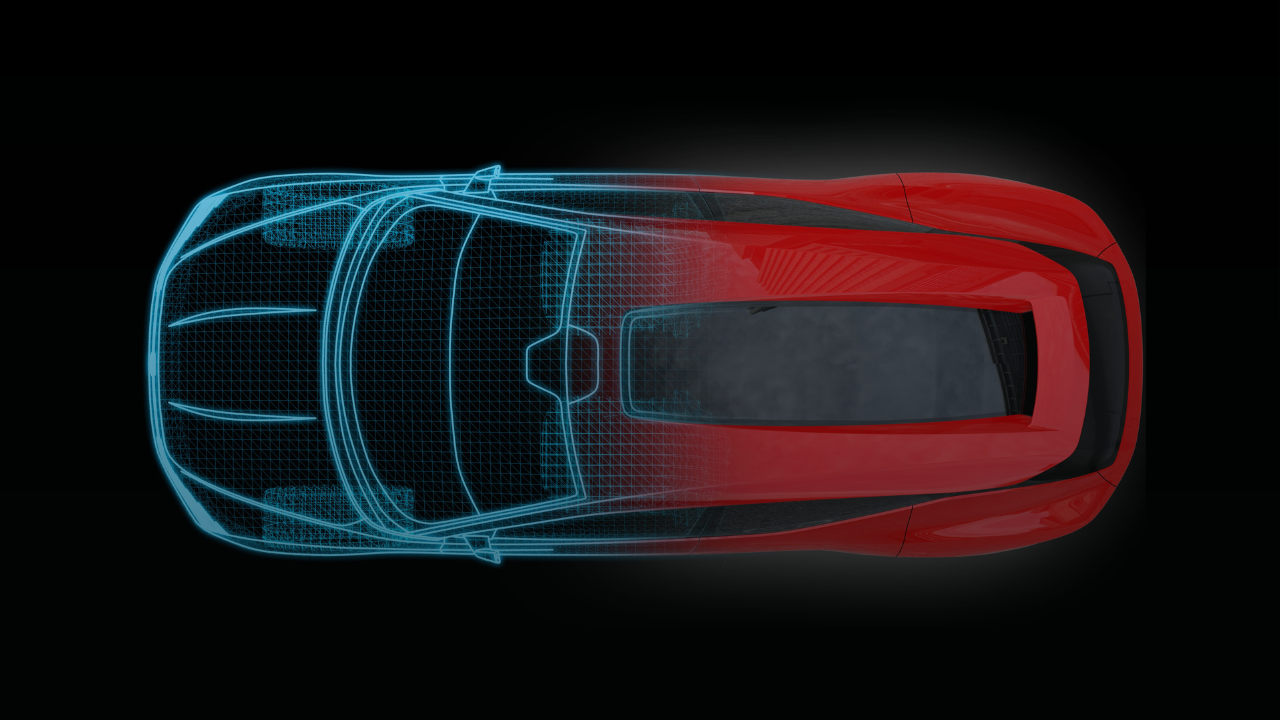The Garage Podcast : S1 EP7
The Journey to SDV with Wards Intelligence [Live at AutoTech: Detroit 2023]
We talk with automotive industry analyst Maitê Bezerra from Wards Intelligence on the journey to software-defined vehicles. In this wide-ranging conversation we discuss the evolving process of deploying SDV technologies into vehicles and how OEMs, Tier-1 and Tier-2 suppliers all have a role in delivering value to the consumer as well as downstream businesses such as fleet management and more.
Listen to audio only version:
Episode Transcript | The Journey to SDV with Wards Intelligence
Table of Contents
- Overview
- Meet Maitê Bezerra
- Fun facts about our guest
- Why are software-defined vehicles important?
- Reducing vehicle weight and assembly complexity
- Key trends in the market
- The trends in make-vs-buy
- Recap of AutoTech Panel on differentiation
- The layer cake of software infrastructure
- The OEM journey of differentiation
- Misconceptions about SDV
- Rethinking the cost/benefit of SDV
- Responsive features through flexible infrastructure
- Paid features are all not created equal
- Electrification as an opportunity
- Conclusion
Overview
JOHN: Today in The Garage, we’re live from AutoTech: Detroit with Wards Intelligence. Let’s go! Hello, and welcome to The Garage. In today’s episode, we’re live from AutoTech: Detroit with Wards Intelligence. And our special guest today is Maitê Bezerra, Principal Analyst for Software-Defined Vehicles with Wards Intelligence. Maitê, welcome to The Garage!
MAITÊ: Thank you.
Meet Maitê Bezerra
JOHN: So tell us a little bit about you and your role at Wards.
MAITÊ: I am a Principal Analyst in Software-Defined Vehicles for Wards Intelligence, meaning that I look about everything from this new journey and transition affecting the automotive industry. So my main goal really at this moment, because we are at the beginning of this transition, is trying to understand what is software-defined vehicles and how this is affecting the companies in the supply chain, and how should they, you know, react and strategies that they should develop to protect this transition in a successful way
Fun facts about our guest
JOHN: And I always like to get to know our guests. Tell us a little bit about you. Where are you from? And tell us one fun thing about you that people might not know.
MAITÊ: Okay. So I’m originally from Brazil. I’m based in the UK, where I work for Wards. Something fun…funny actually, about me. So, before becoming an analyst, I was an academic. And teaching was my passion, to a level that, you know, I started my academic research when I was doing my bachelor course. And I was hired by Microsoft. And everybody was like, “Oh my god, you have the dream job,” and then I quit to start lecturing statistics. So yeah.
JOHN: Okay, so fun fact about me. I always try to come up with a different fun fact every time. A fun fact about me is, when I finished my PhD, I considered being a professor and actually had job offers to be a professor from like, not bad schools, but I decided to go into the private sector. There’s a fun fact. That’s nice!
Why are software-defined vehicles important?
JOHN: Your focus is software-defined vehicles, and that’s very important to us at Sonatus, and we think important to the industry. So I like to ask our guests first, why is the software-defined vehicle important to the industry, and what’s your kind of perspective on it?
MAITÊ: Well, I think there are so many factors that are leading towards this software-defined vehicle transition. One of them is the customers and what they expect from the cars. So now, customers want several functionalities available in their cars, and they want their cars to be updatable as their phones are or their other IoT devices. And if you think about how cars were manufactured, with distributed architectures, that’s not sustainable. You know, a few years ago, premium vehicles would have 100 ECUs, but now we are in a level in which entry-level, mid-range vehicles already have 100 ECUs. And that is very costly, heavy, also for the car. And of course, very hard to update because each ECU is assembled differently by different tier ones with different middleware integration. So yes, how do you scale up all this software? How do you update the software…You can’t do it. It’s not sustainable. So there’s the customer perspective. There’s also, you have to add more functionalities. A, this functionality is because of legislation as well, so again, you have the problem, and then you have electrification. So battery range is still a problem. I know the range has improved significantly in the past years but it is a concern, and weight affects the range of your battery, so you can have several ECUs. You can have the wires in your car, so you need to update the vehicle architecture, basically. And when you update your vehicle architecture, you consolidate the hardware, you have the abstraction layers, and that is where you’re moving towards software-defined.
Reducing vehicle weight and assembly complexity
JOHN: So it really fundamentally helps us change the architecture of vehicles. You know, we see the, you mentioned weight, and I think it’s something that people might not appreciate as important, but the weight of the hardware and also the wiring, the weight of wiring today is a shocking fraction of a vehicle’s weight. And who would have thought that with wheels and metal and frame, but the wiring is significant today, and so I know one of the trends that people are looking at as they go towards future E/E architecture is more simplified, advanced networks that allow you to capitalize on the flexible software because today the network is quite fixed. So if you wanted to add some capability later, actually, you can’t, because the network doesn’t support it. But a side benefit you get kind of for, if you will, for free, is that the vehicle is lighter, the cabling is simpler, the assembly is simpler. The vehicle wiring harness assembly is one of the more challenging parts of the assembly and it’s very labor intensive and adds to the cost of vehicles. The cost that could be perhaps going into other innovations.
MAITÊ: And it’s very costly as well. I learned it recently. Yeah, I didn’t know. I knew about the weights but I didn’t know how costly the wires are as well. So, yes.
Key trends in the market
JOHN: So you talk to many people in companies across the industry, you know, tier ones, tier twos, OEMs. What are some key trends you’re seeing? What’s the, what’s the kind of hot topic right now that people are either grappling with or caring about?
MAITÊ: I think the key message now is understanding that value in-vehicle will be software in the future. So we hear some statistics that around 80% of the vehicle functionalities will be driven by software, developing software. Of course, it’s always hard to have this, you know, numbers when it comes to automotive, because reality is different from quite different automakers. But I guess it, the main point here is that, how will you deliver value to the final customer in the future? And that will be by updating and upgrading the features of these vehicles when they are on the road, and you do this through software. And when you deliver value, of course, you have higher margins, you have higher profits, and this is, seems to me, where the industry is focusing now. So, even the players that were traditionally focused on hardware are now investing in software. I think one example is Qualcomm. They’re a silicon company, and I’ve been to an event hosted by them last year. And, you know, in this event to think was like, four hours, and they said, so many times in this four hours, “We are a software company. We have software.” You see the same trend with tier one suppliers that were traditionally focused on hardware as well, also saying now, “We are investing in software.” So I think the main message now is, software will be the most important part for developers.
JOHN: Right. And you know, you see Qualcomm, for example, just recently acquired Arriver, which has a number of capabilities, but one of them, notably, is some of their software innovations, and I know, some senior execs at Arriver, who have really focused a lot on this kind of software aspect. So as you talked about this, this tier ones, and tier twos and Qualcomm kind of a tier two are doing the software, and I think one of the key things we’ve been seeing over the past few years is this decision of make versus buy with, especially OEMs, going away from what was classically a module where the hardware module came from the tier one it was a black box, literally in many cases, and it had software effectively embedded in and it never changed, or if it changed, it was only via the tier one. Well, then you saw OEMs shifting on the other end of really trying to do all the software themselves, and I don’t know that either one of those solutions is the right one. What are you seeing about this trend of make versus buy?
The trends in make-vs-buy
MAITÊ: That’s a very good question. If we focus on the OEMs first, as you said, a few years ago, when it became clear that this transition towards software-defined vehicles was what was going to happen, some of them said, “Okay, we want to keep control of everything, and we’re going to develop everything at home.” But they are finding out that it’s so complex to develop all the tech necessary for software-defined vehicles. I mean, vehicles are so peculiar. They’re different from all the IoT devices. The complexity of functions that you have in there, and you have mission critical functions as well. So you have different several different layers of software that have to be developed, and OEMs are finally realizing, okay, we can’t do everything, and we can’t do everything and do everything well. At some of these layers, you know, it’s software that has been used and approved. They already have standards, so there’s no reason to reinvent the wheel. They’re now understanding that they need partnerships and cooperation. I think one of the examples that everybody’s seeing and talking about is CARIAD, for example, Volkswagen was an OEM that said, “We’re going to develop everything,” and now they’re searching for partnerships. Now, with the tier one suppliers, at least, my impression is that they are trying again to, to develop software as well because they see that the value is in software. And I feel like some of them are kind of following the same path that OEMs did in the past, so trying to develop everything themselves as well. So trying to deliver this value to OEMs because they’ve seen the margin of what they are selling for the OEMs decreasing because its mostly hardware. But I’m seeing some of them now talking more about partnering with tier two suppliers as well. And on the tier two suppliers side, what I’m hearing is, because of this abstraction layers is becoming easier to integrate their functionalities into the vehicle platform directly without having this consolidator in between. So some of them actually working there, I see with OEMs as well. So it’s kind of, you know, everyone is realizing that you have to collaborate. So, yeah.
Recap of AutoTech Panel on differentiation
JOHN: So yesterday, I was honored to be on a panel session here at the conference you hosted, where we talked about these topics, and I thought maybe it’d be good to take a moment and cover some of the things we discussed there with a number of the panelists. And the topic of the panel was effectively around this, this differentiation line of, of what’s the, where’s the line? Where do you draw it? What’s important to do? What’s important to outsource? And we had a really interesting hour-long conversation, we couldn’t possibly summarize but maybe we can talk about a few of the ideas there. So what were some of the key takeaways you heard from that conversation?
MAITÊ: I think that one of the key takeaways is everybody keeps asking, what should OEMs do themselves, and what should they outsource, right? And I think the answer is: there isn’t a clear answer. It really depends case by case on what is your brand value, and what is it that you want to deliver? And what is it that you want to control? I think this is the first question that the OEMs have to answer. After answering that, then it becomes clear on what are the layers that you should own? And what are the layers that are not going to deliver direct value to your customer, right? And, yes, again, there isn’t really clear cut, it’s really, we, we can, you know, try to have an answer for—I heard someone say, “OEMs, should control 60% of the software, and 40% should be outsourced.” I don’t think we can—
JOHN: It seems very artificial.
MAITÊ: Exactly, exactly. I mean, every OEM is different, right? And also, some OEMs already have some development in-home, right? And we can’t just say, “I know this is a complete transition from what we had before, but we can’t tell these companies.” “Oh, you know, what, don’t use anything that you have.” So you need to have some flexibility as well in you know, working with partners in parts where you don’t have competencies, but some parts you do have it, so you have to mix them together. But that’s based on what you have, and what is your reality.
The layer cake of software infrastructure
JOHN: Yeah, we were talking about that and I liken it to a little bit of a layer cake where, you know, there are some underlying technologies that enable the flexibility, that enable configurability after-sale. But a lot of those capabilities the customer never sees. They’re critical, they’re valuable, they’re important, but the customer never sees, and a lot of these problems have been solved. They’ve been solved in software-defined networking, they’ve been solved in data center, they’ve been solved in other industries. And so why not bring those knowledge that know how in those capabilities to the table from partners, that then gives them a leg up to deliver the things that the customer does see and they care about. Whether that’s user experience, or performance tuning or, or sustainability, or efficiency or range, or whatever, but those fundamental layers, it feels to me and it feels to us at Sonatus could be a real opportunity for a win-win.
MAITÊ: Exactly. I think it was, you who mentioned this example, I thought it was really interesting. When you buy a laptop, you’re expected to have a USB port and the USB port should work, right? But as a customer that’s a given that it has to work but it doesn’t matter for you, how that is working and the tech behind it, and this is actually well, what’s going to happen.
JOHN: And some company worked really hard. You know, there’s a lot of chipset makers that, that’s what they do: they make sure USB works, and companies that make laptops, they don’t have to reinvent that wheel. They buy that, they put it in, and they focus on the user interface, they focus on very important things that the customer sees. It’s perhaps it’s, thank you, perhaps it’s a good analogy. It’s one that seems to work for my feeble mind.
The OEM journey of differentiation
JOHN: I wonder about, you know, where do you see the industry because you meet so many customers and so many tier ones. What’s your take on where people are on this kind of mental journey? You gave some examples, CARIAD and others that I think they’re maybe evolving their thinking. If you look at a macro-level across the industry, what sort of percentage of companies are still kind of stuck on doing everything or which ones are successfully partnering? I don’t know….where’s the spectrum?
MAITÊ: God, that’s such a difficult question, and I think that is because what we’re finding now is that companies are in different stages of their journey. I think the companies there are still at the beginning, are the ones that seem to think they either can do everything or they don’t want to do anything and might later realize that you do need to have some ownership in your car, right? I am seeing, I think that in general, we have a larger number of OEMs finally understanding that collaboration has to be in place. What I hear as a feedback is that it doesn’t seem to have a clear consensus still on where I should collaborate and where I shouldn’t. I think this is something that the OEMs have to try to understand, tier ones as well. So all the suppliers I see are trying to, you know, realize how do I deliver value, and what are the invisible layers in there, and so how we collaborate?
JOHN: Interesting. That’s going to be a journey, I think, of many years ahead as we go through this. We’ve got, we had a very successful relationship with our, our initial OEM customer, Hyundai, Kia, Genesis, and, and likewise, some of their tier one suppliers, and we found that, you know, it was a journey and working with them initially, they weren’t sure how to work with us, and we weren’t sure some of their needs, but by talking and working through things and building trust, we’re able to show that actually both sides can, can really benefit. And it can be collaborative, and it’s not it’s not either or.
Misconceptions about SDV
MAITÊ: Yes, you know, it’s funny, we’re talking here, and this is what I love about conferences, right? Because it just, you know, bump into people and you start talking. I was talking to someone from an OEM, of course, I’m not gonna say the name, but it was just interesting that this person is asking me: “Why software-defined vehicles? Do we really have to transition? I mean, what is the value of the customer?” And I think it goes back to the point in which we know we have to position but still trying to figure it out. OEMs are still trying to figure out where they will deliver value and how they will deliver it to the customer.
JOHN: Some people, some consumers, and some people, when they hear software-defined vehicle, think that means services you’re going to have to pay for, subscription services after sale. And I think that’s a grave oversimplification of the situation. I think there’s a place for that, and I think that will be part of the spectrum of things. But I think that’s only one small part of it. Right?
MAITÊ: Completely. I mean. Of course, one of the, I think one of the reasons why we have this feeling is because some of the announcements that were made by OEMs, about, you know, charging for things like heated seats. But, yes, there’s a really small part. I mean, this, again, was the conversation I was having with this OEM. We’re talking about a completely fundamental change in the vehicle architecture. The fundamental change in how you think of the vehicle, how you update the vehicles. So also talking to a tier one supplier, they were saying, “Before we will assemble the car is something that never has to be updated. It’s not that we don’t have the enabling technologies, it’s just that we never thought that we would have to do that.” Right? So we are changing this, but that doesn’t mean that the customer, the final customer, will have to pay a subscription for that. It’s, you know, the value will be delivered in different places, and, also, it’s not only B2C business cases that we’re talking about. There are a lot of B2B opportunities in the car as well. So you can, you know, work with infrastructure and having a win-win relationship in which you can offset the costs. So the customer would just benefit from the better experience.
Rethinking the cost/benefit of SDV
JOHN: That’s right. If you’re doing it right and delivering enough value, the investment itself of the software-defined vehicle is a net savings. I mean, think about recalls are in the billions of dollars, right? It doesn’t take much if you can avoid one recall, you paid for your entire software-defined vehicle effort 10 times over potentially, or something like that. It’s very interesting. The other thing that I think is, you mentioned different parts of the value chain. So we recently announced our products this week that allows better vehicle automation, and one of the use cases we think is potentially interesting is fleet management. Fleet has been around for a long time, it’s not new, but if aside from maybe the big logistics companies that have a custom fleet logistics solution. If you’re maybe a rental car company or something like that using off the shelf vehicles, you’d really love to be able to put customized solutions for whether your, your rentals or your delivery customers, and today that’s quite cumbersome to do. So I think there’s huge opportunities for B2C, as you mentioned, value-adding things that can be a win-win for the OEM, for the downstream customer, and for the driver or the user. And so I think we want to collectively as an industry enable all of that, and so it’s not just how can I squeeze another thing from the consumer? It’s much more complicated than that.
MAITÊ: Exactly. And you know, another thing that, it’s about if the OEM is capable of understanding what the engagement level of the user with the tools in the car and improve what they are offering, based on this understanding, you know, you’re not charging anything from that, but the value that you’re going to deliver to the customer is enormous. People buy cars from your brand because you are delivering what they want to have. Sure. And you’re not paying more for that.
JOHN: So we were talking with a Product Manager from a company who said they really struggle with understanding how the vehicle is used, and whether there may be abilities for them to optimize the vehicle cost and make sure that the features they invest in are the ones that customers use, and actually everyone benefits from that.
Responsive features through flexible infrastructure
JOHN: You know, you talked earlier about updating, and one of the other things that resonated with me with one of the other panelists mentioned that, classically, when you buy a car, the moment you buy it, the moment you drive it off the lot, it’s the best it’ll ever be.
MAITÊ: Yes.
JOHN: And then it only goes downhill from there. But that, now and that potential of software-defined vehicles is, when you buy the car, it’s the worst it will ever be because it’s going to be improved in countless ways, and I like to give this example of Tesla has this Sentry Mode, which they delivered as a value-added upgrade. Well imagine you’re an OEM and you have lots of cameras, perhaps for lane-keeping or other reasons, in the car. But now all of a sudden, Tesla or someone else rolls out a feature like Sentry Mode and you’re like, “Gosh, I don’t have that in my car and I have to wait, my customer has to wait three years for that new feature.” Well, wouldn’t it be better if you could deliver that to the customer with a software update, and maybe you don’t even pay for, but just from a customer loyalty perspective, they’re like, “This is great! My car got better, in fact, they didn’t even charge me anything.” That’s the kind of thing I think is a huge potential value creator, even with customers.
MAITÊ: I completely agree. I mean, if you think about the possibilities of what you can do with the hardware that you have in the car, honestly, there’s so many, and we still don’t know all we can do. And we will find out later. And then you have the possibility of oh, I can do this with the camera, and, you know, just send an update to the customer. How amazing is that? So, yes.
JOHN: And we were talking yesterday also about the fact that, you know, we need to be planning ahead for features that we can’t even conceive of. Today, every car more or less, every car has a streaming built in that you can log into your favorite streaming service, Spotify, or whatever, and you can stream to your car. Well, five years ago, let’s say, no cars had streaming.
MAITÊ: Right.
JOHN: So if you want to make a car that has a lifetime, that’s upgradeable, you have to recognize there are going to be services and capabilities that we don’t even know about that might be mandatory in a year or two years. And if you’re not able to respond to that, it’s going to be very painful for you to stay competitive in the markets.
Paid features are all not created equal
MAITÊ: Precisely, precisely. And, you know, there’s another thing we were discussing yesterday, which is understanding value and delivering value. Yes, if you say that you are charging subscriptions for something that I don’t see any value, I’m going to complain about it. But if there is something in the car that I like, and I want to use, I’m gonna pay for it. I pay so many subscriptions, and I don’t complain about them.
JOHN: I think that’s right. I sort of think about it like advertising, where, you know, if you see an advertisement for something you like, maybe, you know, you’re shopping for a certain kind of product, and you get an advertisement for one of the products in that category, you think, “Oh, that’s kind of interesting.” What you really get upset about is an advertisement for something you’re not interested in. So at least if you have the opportunity to subscribe to things that are value-creating for you, then it may be that everyone’s a winner and that the customer can choose. I mean, my car has subscription features that I use and has subscription features I don’t use, and that’s that an a-la-carte model can be beneficial if the right flexibility is there.
MAITÊ: That’s the key, I think, flexibility. And it’s like, does it all have to be subscription? No, it can be a one-off purchase, it can be, you know, you can have the option of paying for these features when you buy the car. So I think the main point in here is being open. We don’t know what features will be in the car in the future. We don’t know how the customers will want to pay for it, and honestly, I think it’s also differs between people, right? Some people prefer subscriptions, others don’t. So I think the key point that OEMs should have in mind is this is the opportunity of upgrading their vehicle architecture and upgrading their company as well, becoming more agile and prepared to react to the customer preferences. To react to the evolution in technology and offer a better user experience to the vehicles that they have on the road. And that’s it. That should be the focus, right? Having the capability of doing this. That’s the key point.
Electrification as an opportunity
JOHN: One of the trends, that is of course, a huge change right now is electrification. We’re seeing a big shift towards electrification with pretty much every OEM now in many cases, leaning very heavily towards electrification. And it seems to me, and I’m curious about your perspective, that the shift towards electrification is giving OEMs a natural inflection point to rethink their E/E architecture because instead of just taking their old E/E architecture, because electric cars are fundamentally simpler, so much simpler than an ICE car, that I think, it seems to me, they’re getting an opportunity to rethink their E/E architecture. Is that what you’re seeing too?
MAITÊ: Absolutely. I think there is a very high correlation between electrification and software-defined vehicles exactly because of this. I mean, of course, I think the vehicle architecture would have to be optimized anyway, because we’re reaching a point that even for ICE vehicles, it’s way too many ECUs, way too many cables, there’s too much complexity. But electrification is giving the opportunity to, you know, start from scratch. Because this is one problem of software-defined vehicles, when OEMs think about it. Some of them once you have this incremental, you know, you get what you already have, and just make a few changes. That doesn’t necessarily work. You have to change, really change the vehicle architecture. You have to go to a domain architecture. You have to go to a zonal architecture. And electrification is giving you the opportunity to do that. So, yes. If you’re ready to start from there, then your journey, it’s much easier, and that’s why we see EV startups being, you know, far ahead in terms of—
JOHN: It’s because they don’t have a legacy that they’re maybe wedded to.
MAITÊ: Exactly.
JOHN: They can start with a clean slate and then they have to start with a clean slate anyway, so why not use modern practices? And that’s why we’re seeing the traditional OEMs starting the efforts to SDVs with their electric vehicle lines as well. It’s to start from scratch.
Conclusion
JOHN: Well Maitê, this has been an incredible conversation. It’s so nice to see you. It was wonderful on the panel yesterday. Thank you for joining us on The Garage, I really appreciate it.
MAITÊ: Thank you for inviting me.
JOHN My pleasure. So thank you for joining us on today’s episode of The Garage. Today our guest was Maitê Bezerra from Wards Intelligence, and here at AutoTech: Detroit, we had a wonderful opportunity to talk about the importance of differentiation in the shift towards software-defined vehicles. And today, we covered a wide range of topics around this area. We hope you enjoyed this episode. If you like what you’re seeing, please like and subscribe so you can see more episodes in the future. And we look forward to seeing you again very soon. Thanks very much.
Recent episodes
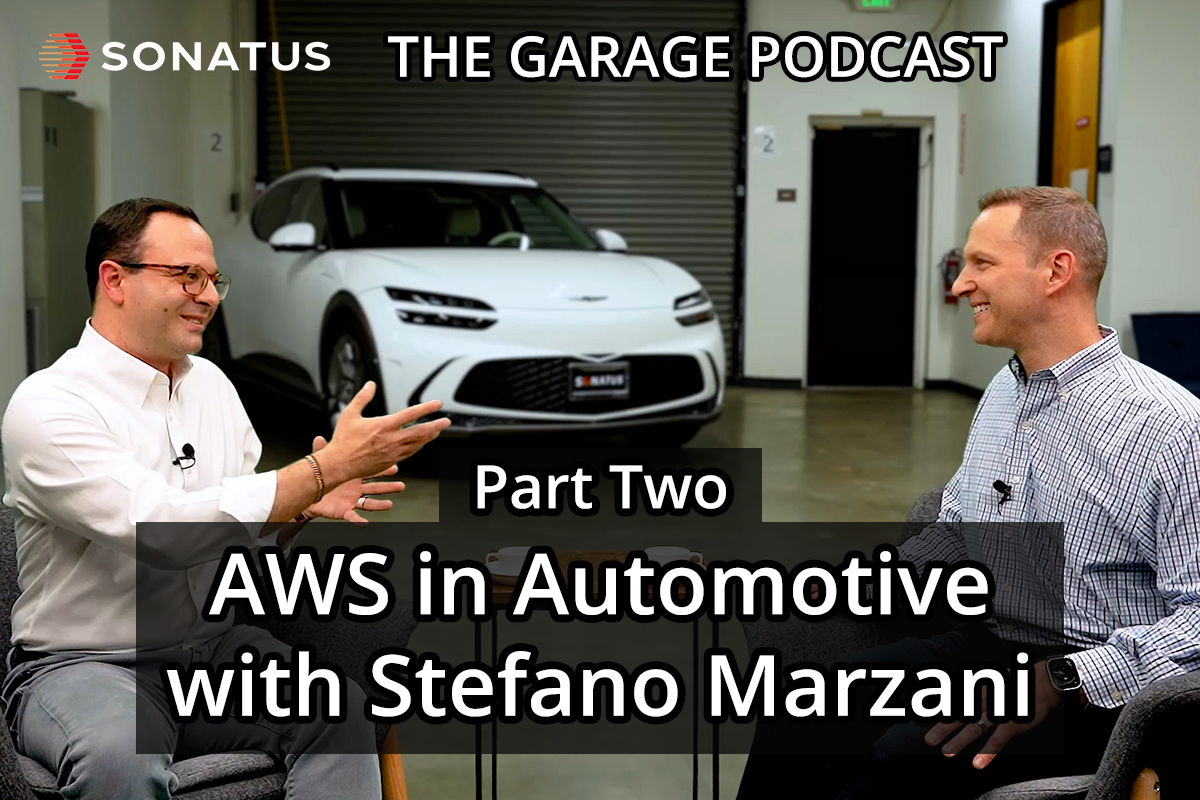
The Garage Podcast
AWS in Automotive with Stefano Marzani, Part 2 of 2
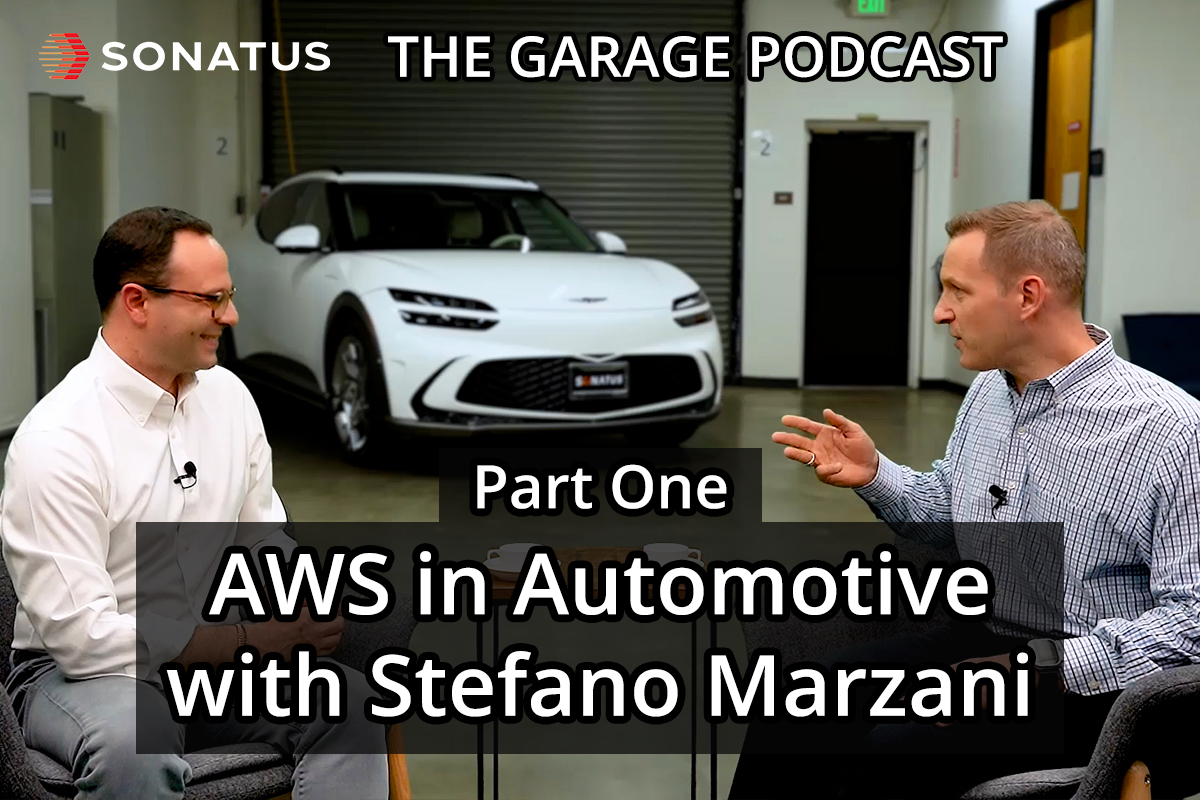
The Garage Podcast
AWS in Automotive with Stefano Marzani, Part 1 of 2
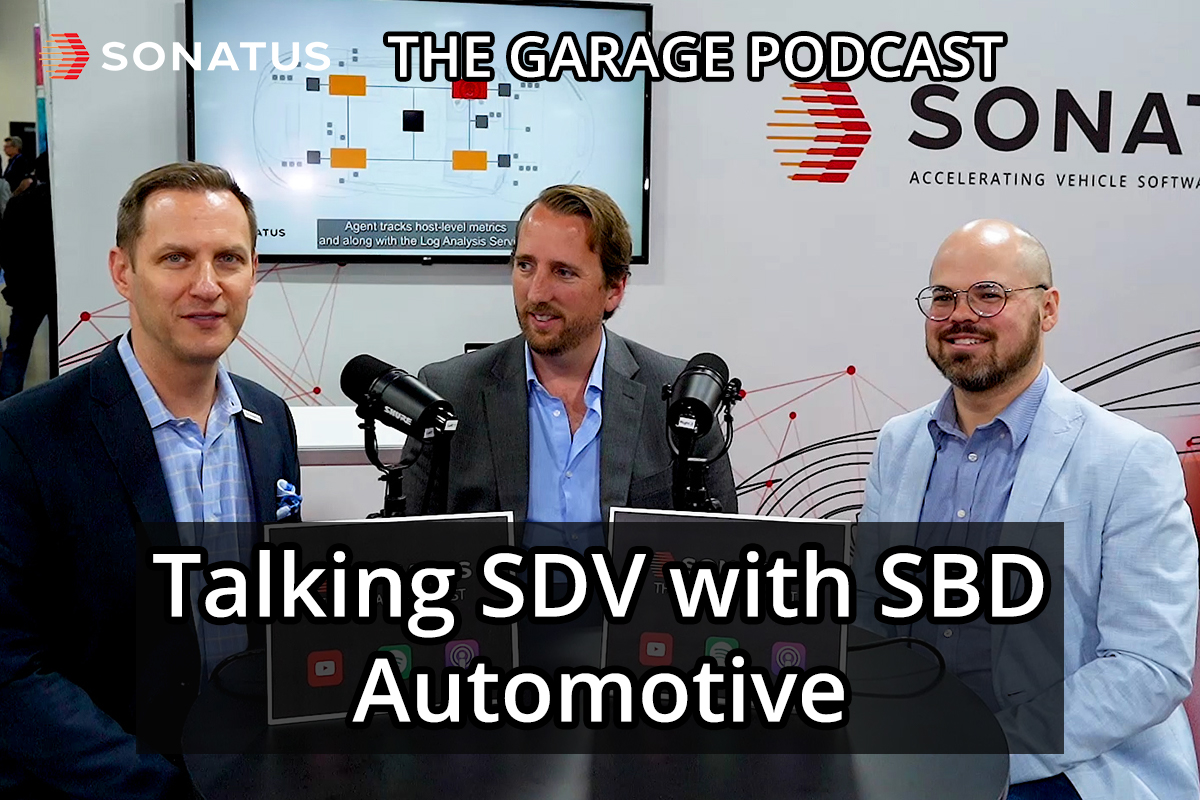
The Garage Podcast
Talking SDV with SBD Automotive [Live at AutoTech: Detroit 2023]
Related resources
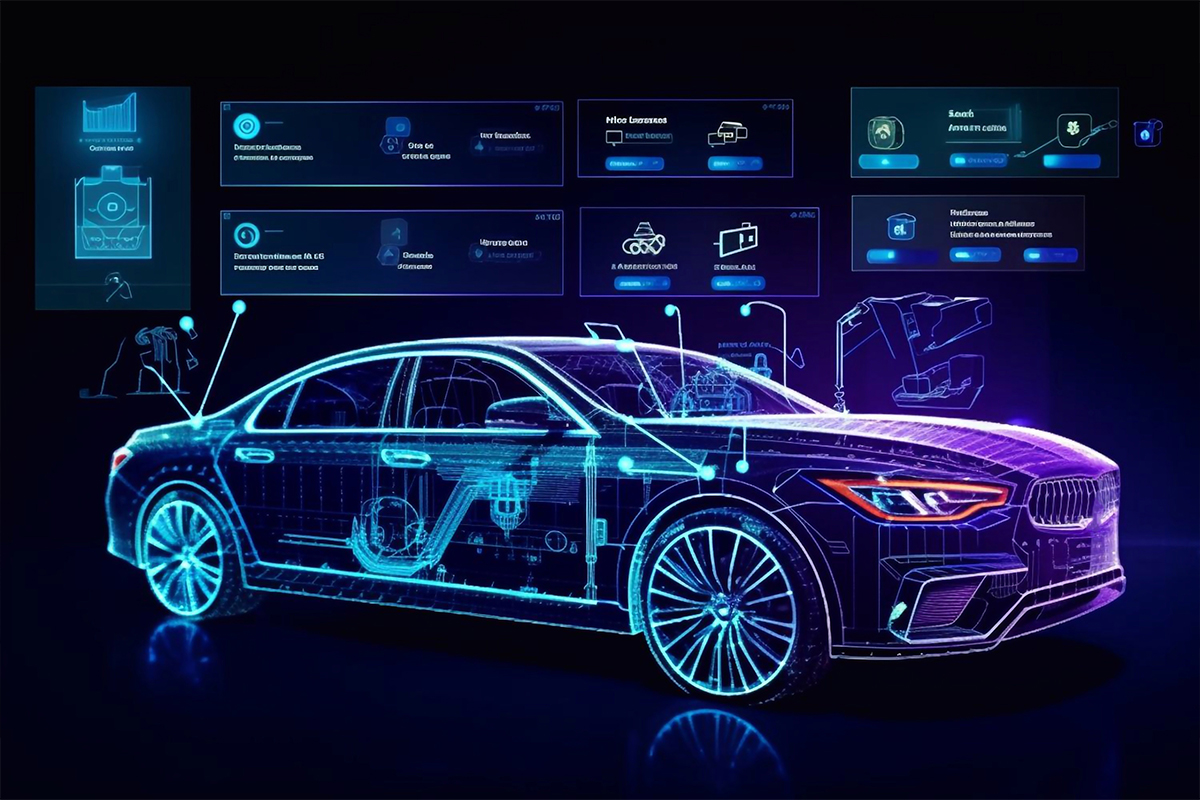
The Definitive Guide to Software Defined Vehicles
These days, the automotive industry is talking about software-defined vehicles (SDVs), but not everyone understands what this means. Don’t all vehicles already have automotive software inside?
Maximizing the Value of Vehicle Data
Improved connectivity capabilities for vehicles have expanded proficiency in the gathering and use of telemetry data produced by in-vehicle components,…